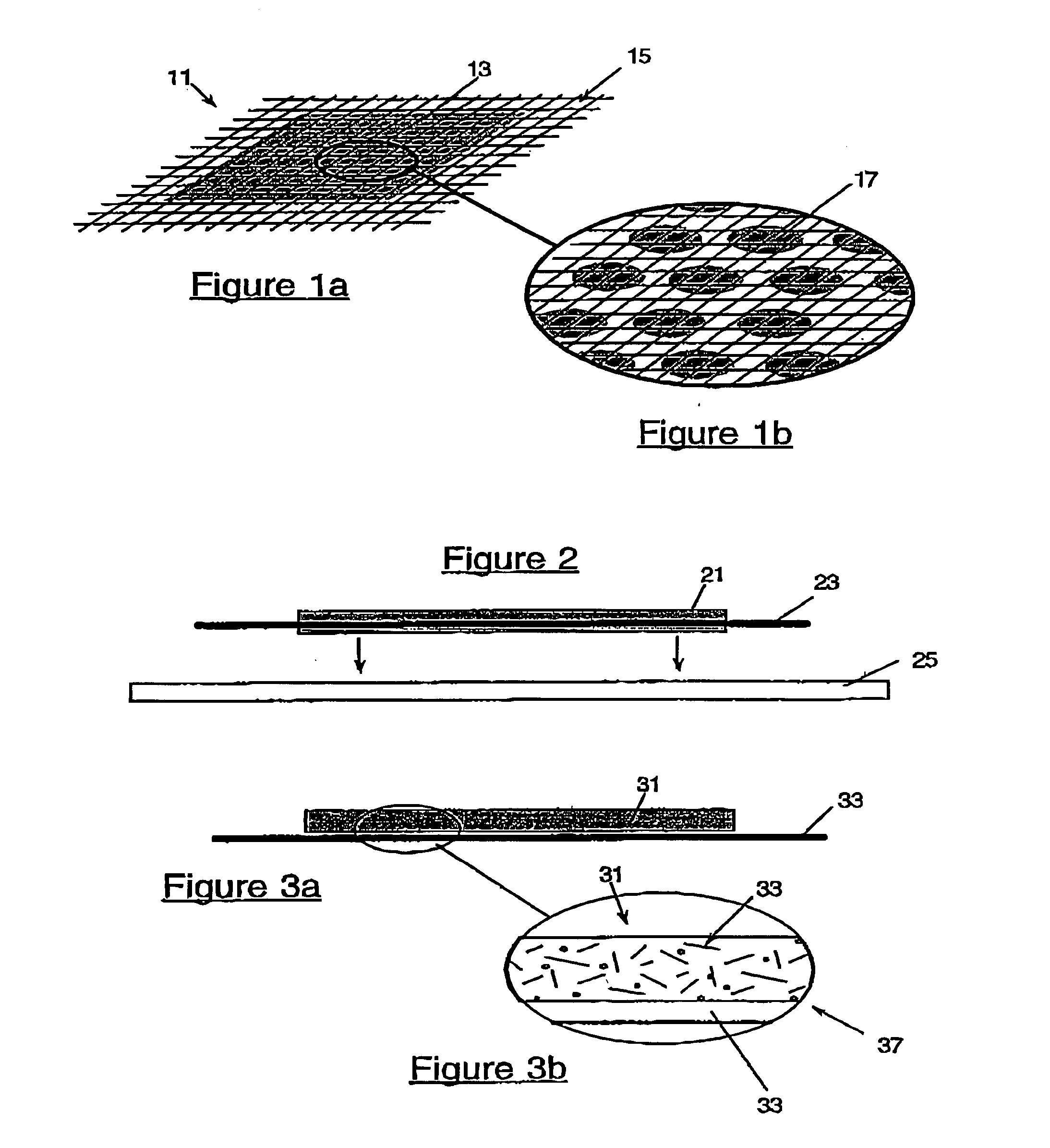Honey based wound dressing
a honey and wound dressing technology, applied in the field of honey based wound dressings, can solve the problems of slow healing process, relatively fluid nature of honey, and relatively time-consuming techniques to apply and maintain, and achieve the effect of easy trimmed to shape and varied degree of flexibility and softness
- Summary
- Abstract
- Description
- Claims
- Application Information
AI Technical Summary
Benefits of technology
Problems solved by technology
Method used
Image
Examples
example 1a
[0095] For high viscosity products (e.g. sheets) the gel should be rolled into a sheet of the desired thickness as soon as it has gelled sufficiently to be able to handle the rolling procedure. The sheets should be maintained at a temperature high enough for hydration of the alginate to be completed and the full viscosity to be achieved for this particular product. By way of example this may be 60.degree. C. for approximately one hour, or for longer periods at lower temperatures. This may vary according to the nature of the selected honey, the properties of the alginate selected etc., and thus some minor trial experimentation may be required to achieve an embodiment having the precise characteristics required by the user.
example 1b
[0096] As an alternative to Example 1a, a low viscosity product (e.g. a gel formulation or some putties) the blended mixture should be held at the elevated temperature to allow hydration of the alginate to be completed and the full viscosity achieved before it is packed or formed into the desired configuration. Some softer sheet-like embodiments may be also formed according to this method.
example 1c
[0097] For intermediate products, such as the putties, optional fillers and additives altering the physical properties of the resulting product (e.g. fibres) are preferentially introduced after the alginate has been substantially homogeneously dispersed throughout the honey and while the gelling process is occurring. The inclusion of such additives may also occur at other times, though it is noted that their inclusion prior to alginate addition may interfere with the ready blending of the alginate with the honey in some instances, while addition at a later stage may be more difficult for some embodiments e.g. the addition of fibres after gelling has substantially occurred.
PUM
| Property | Measurement | Unit |
|---|---|---|
| temperature | aaaaa | aaaaa |
| water content | aaaaa | aaaaa |
| temperature | aaaaa | aaaaa |
Abstract
Description
Claims
Application Information
 Login to View More
Login to View More - R&D
- Intellectual Property
- Life Sciences
- Materials
- Tech Scout
- Unparalleled Data Quality
- Higher Quality Content
- 60% Fewer Hallucinations
Browse by: Latest US Patents, China's latest patents, Technical Efficacy Thesaurus, Application Domain, Technology Topic, Popular Technical Reports.
© 2025 PatSnap. All rights reserved.Legal|Privacy policy|Modern Slavery Act Transparency Statement|Sitemap|About US| Contact US: help@patsnap.com

